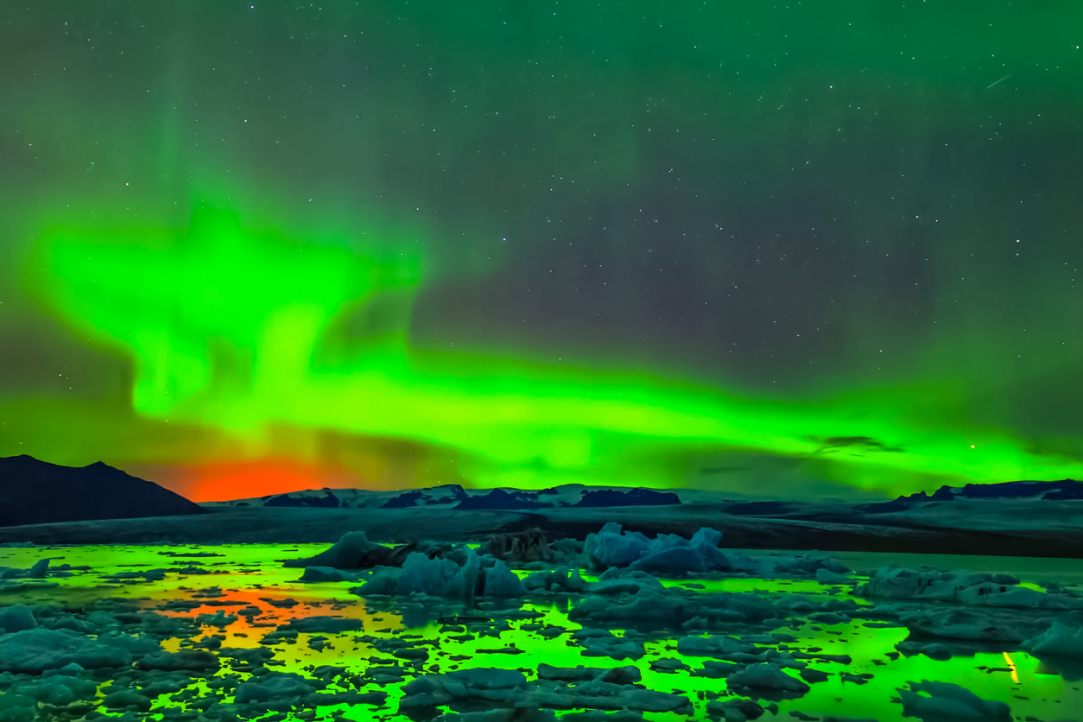Researchers Explain Potential Cause of Earth’s Green Airglow

A team of Russian researchers from HSE University, the Russian Space Research Institute, and the Pushkov Institute of Terrestrial Magnetism (Russian Academy of Sciences) has described the development of modulational instability of electromagnetic waves in dusty ionospheric plasma, which is caused by a high intensity of electromagnetic emissions. The researchers considered inelastic collisions of ionospheric plasma particles and formulated new tasks and applications to be addressed at a later stage. The results are published in the Physics of Plasmas journal.
Modulational interaction is an important factor in explaining various natural phenomena. It is a key process observed when plasma transitions from weak turbulence to strong turbulence. In weak turbulence, plasma waves are chaotic, but only weakly correlate with one another. Strong turbulence produces a stronger correlation, which results in the formation of strongly correlated structures (solitons, cavitons, filaments), the generation of magnetic fields, and the warming and effective acceleration of particles.
In a previous study from 2009, the researchers looked into the possibility of modulational instability developing in ionospheric plasma at altitudes of 80–120 km during high-speed meteor showers. These meteor showers appear to cause the formation of dusty plasma at such altitudes, which in turn significantly affects the character of non-linear plasma processes.
The new research highlights the important role played by inelastic collisions between neutrals (neutral ions) and electrons and ions of the dusty ionospheric plasma. The effect of modulational instability on the propagation of electromagnetic waves in dusty ionospheric plasma is most significant at 100–120 km. This is the altitude of dense atmospheric layers in which spacecraft heat up. When entering these altitudes, meteoroids evaporate, after which meteor matter condenses and small particles form to become part of dusty plasma.
Modulational instability in dusty plasma affects the low frequency area of the electromagnetic noise spectrum and generates infrasonic waves which may reach Earth’s surface.

Professor Sergey Popel, author of the article, Professor of the HSE Faculty of Physics, and Head of Laboratory of Dusty Plasma Processes in Space Objects of the Space Research Institute of the Russian Academy of Sciences
Infrasonic waves may be excited by volcanic eruptions, earthquakes, supersonic planes, explosions on the ground, etc. It is essential to identify infrasonic sources in order to understand the origin of infrasound.
Modulational interaction at altitudes of 110–120 km helps to explain the amplification of green radiation density in the sky at the 557.7 nm wavelength. It generates dusty sonic waves which become unstable at altitudes higher than 110 km, thus causing vortexes. These vortexes move matter at different altitudes, creating conditions for chemical reactions accompanied by photon emissions. We see the photons as green airglow.
Modulational interaction also creates heterogeneous electron and ion concentrations in the ionosphere when powerful heating facilities such as HAARP, EISCAT, etc are in operation.
The authors of the article also studied dusty plasma in meteor tails. The research shows that modulational interaction can also explain observed effects such as the electrophonic noise of meteors in flight.
‘Our results are important, as they can explain and describe natural phenomena in Earth’s ionosphere and atmosphere—in particular, the propagation of electromagnetic waves at altitudes of 90 to 120 km. We are planning to continue our research into the effect of heterogeneity in modulational excitation in the ionosphere caused by facilities such as HAARP, EISCAT, etc, which affect Earth’s atmosphere,’ says Sergey Popel.

